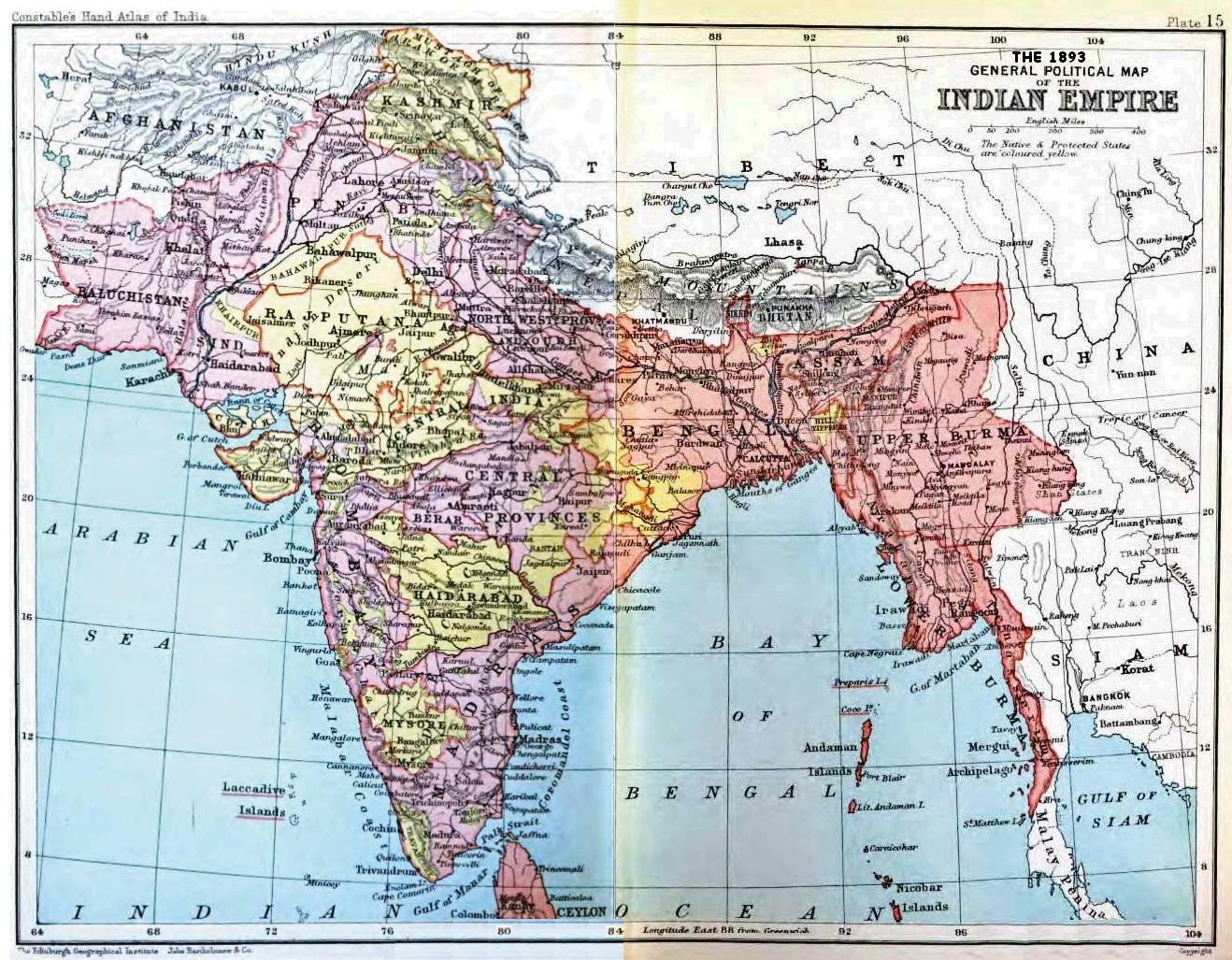
Indian independence movement
The Indian Independence Movement was a series of historic events in South Asia with the ultimate aim of ending British colonial rule. It lasted until 1947, when the Indian Independence Act 1947 was passed.
For independence movements of indigenous American people, see Native American self-determination.
The first nationalistic movement for Indian independence emerged in the Province of Bengal. It later took root in the newly formed Indian National Congress with prominent moderate leaders seeking the right to appear for Indian Civil Service examinations in British India, as well as more economic rights for natives. The first half of the 20th century saw a more radical approach towards self-rule.
The stages of the independence struggle in the 1920s were characterised by the leadership of Mahatma Gandhi and Congress' adoption of Gandhi's policy of non-violence and civil disobedience. Some of the leading followers of Gandhi's ideology were Jawaharlal Nehru, Vallabhbhai Patel, Abdul Ghaffar Khan, Maulana Azad, and others. Intellectuals such as Rabindranath Tagore, Subramania Bharati, and Bankim Chandra Chattopadhyay spread patriotic awareness. Female leaders like Sarojini Naidu, Vijaya Lakshmi Pandit, Pritilata Waddedar, and Kasturba Gandhi promoted the emancipation of Indian women and their participation in the freedom struggle.
Few leaders followed a more violent approach, which became especially popular after the Rowlatt Act, which permitted indefinite detention. The Act sparked protests across India, especially in the Punjab province, where they were violently suppressed in the Jallianwala Bagh massacre.
The Indian independence movement was in constant ideological evolution. Essentially anti-colonial, it was supplemented by visions of independent, economic development with a secular, democratic, republican, and civil-libertarian political structure. After the 1930s, the movement took on a strong socialist orientation. It culminated in the Indian Independence Act 1947, which ended Crown suzerainty and partitioned British India into the Dominion of India and the Dominion of Pakistan.
India remained a Crown Dominion until 26 January 1950, when the Constitution of India established the Republic of India. Pakistan remained a dominion until 1956 when it adopted its first constitution. In 1971, East Pakistan declared its own independence as Bangladesh.[1]
All India Muslim League[edit]
The All-India Muslim League was founded by the All India Muhammadan Educational Conference at Dacca (now Dhaka, Bangladesh), in 1906. Being a political party to secure the interests of the Muslim in British India, the Muslim League played a decisive role behind the creation of Pakistan in the Indian subcontinent.[76]
In 1916, Muhammad Ali Jinnah joined the Indian National Congress, which was the largest Indian political organisation. Like most of the Congress at the time, Jinnah did not favour outright self-rule, considering British influences on education, law, culture, and industry as beneficial to India. Jinnah became a member of the sixty-member Imperial Legislative Council. The council had no real power or authority, and included a large number of unelected pro-Raj loyalists and Europeans. Nevertheless, Jinnah was instrumental in the passing of the Child Marriages Restraint Act, the legitimisation of the Muslim waqf (religious endowments) and was appointed to the Sandhurst committee, which helped establish the Indian Military Academy at Dehradun.[77] During the First World War, Jinnah joined other Indian moderates in supporting the British war effort.
Congress leader and famous poet Hasrat Mohani and Communist Party of India leader Swami Kumaranand had demanded complete independence (Purna Swaraj) from the British in 1921 and put the resolution during an All-India Congress Forum at the Ahmedabad Session of AICC.[100] Maghfoor Ahmad Ajazi supported the 'Purna Swaraj' motion demanded by Hasrat Mohani.[101]
In 1928, India League was established by V. K. Krishna Menon in London to demand total independence from the British rule.[102][103] This organisation has been described as "the principal organisation promoting Indian nationalism in pre-war Britain".[104]
Following the rejection of the Simon Commission's rejections, an all-party conference was held at Mumbai in May 1928 to instill a sense of camaraderie. The conference appointed a committee under Motilal Nehru to create a constitution for India. The Kolkata session of the Indian National Congress asked the British government to accord India dominion status by December 1929, or face a countrywide civil disobedience movement.
Amid rising discontent and increasingly violent regional movements, a call for complete sovereignty and an end to British rule found greater support from the people. At the Lahore session in December 1929, the Indian National Congress adopted the aim of complete self-rule. It authorised the Working Committee to launch a civil disobedience movement throughout the country. It was decided that 26 January 1930 should be observed all over India as the Purna Swaraj (complete self-rule) Day.
The Gandhi–Irwin Pact was signed in March 1931, and the government agreed to release political prisoners. Mahatma Gandhi managed to have over 90,000 political prisoners released under this pact.[105] Though his appeal to terminate the death sentences of Bhagat Singh, Sukhdev Thapar and Shivaram Rajguru was not accepted by the British. For the next few years, Congress and the government negotiated until the Government of India Act 1935 emerged. The Muslim League disputed the claim of the Congress to represent all people of India, while the Congress disputed the Muslim League's claim to voice the aspirations of all Muslims.
The Civil Disobedience Movement launched a new chapter in the Indian independence movement. It did not succeed by itself, but it brought the Indian population together, under the Indian National Congress's leadership. The movement resulted in self rule being a talking point once again, and recruited more Indians to the idea. The movement allowed the Indian independence community to revive their inner confidence and strength against the British Government. In addition, the movement weakened the authority of the British and aided in the end of the British Empire in India. Overall, the civil disobedience Movement was an essential achievement in the history of Indian self-rule because it persuaded New Delhi of the role of the masses in self-determination.[106]












